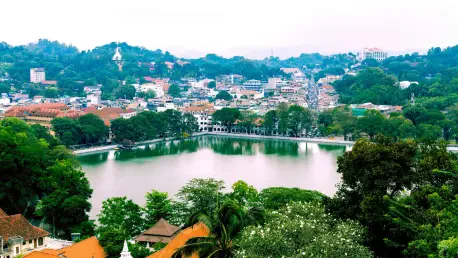In a nation where land ownership often defines security and identity, Sri Lanka’s ambitious ‘Bim Saviya’ program, launched over two decades ago, promised to revolutionize property rights by issuing secure title certificates to millions of landowners. Designed to survey 16 million land plots and resolve longstanding disputes, the initiative was envisioned as a cornerstone of economic stability and social equity. Yet, despite years of effort and substantial financial investment, progress has been dishearteningly slow, with only a fraction of the target achieved. This glaring gap between ambition and reality raises critical questions about systemic inefficiencies, regional disparities, and the future of land ownership in the country. As frustration mounts among stakeholders, the government’s renewed focus on underserved areas offers a glimmer of hope, though the road ahead remains fraught with challenges.
Unveiling the Program’s Slow Progress
Assessing the Scale of Unmet Goals
The scope of ‘Bim Saviya’ was nothing short of monumental, targeting the survey of 16 million land plots across Sri Lanka to provide indisputable ownership certificates. However, after 26 years, the program has managed to issue just 462,922 certificates, representing a mere 2% of its goal. Even the preliminary step of surveying has lagged significantly, with only 2.1 million plots measured, leaving a daunting backlog of 13.9 million yet to be addressed. Further along the process, gazetting notices for ownership claims and confirming absolute ownership have also faltered, with only 1.78 million plots gazetted and fewer than a million confirmed. This sluggish pace highlights deep-rooted inefficiencies that have hindered the program from delivering on its transformative promise. The persistent delays not only frustrate landowners awaiting clarity but also undermine trust in governmental efforts to secure property rights, casting a shadow over the initiative’s credibility.
Financial Burdens Under Scrutiny
Beyond the operational delays, the financial cost of ‘Bim Saviya’ has sparked intense debate among critics and officials alike. By the close of last year, the program had consumed over Rs. 10.5 billion, translating to an average of Rs. 21,978 per issued certificate—a figure many deem excessive given the limited output. Critics argue that such expenditure reflects poor management and a lack of accountability, pointing to the stark contrast between funds spent and results achieved. However, defenders within the department counter that transitioning from traditional deed registration to a more robust title system inherently demands significant investment. They emphasize that the cost per plot remains competitive compared to conventional survey and registration expenses, framing the expenditure as a necessary step toward long-term security for landowners. This financial contention underscores the broader challenge of balancing immediate costs with the promise of enduring benefits.
Addressing Regional Disparities and Future Plans
Urban Indifference Versus Rural Need
One of the striking trends in the implementation of ‘Bim Saviya’ is the uneven engagement across Sri Lanka’s diverse regions. In urban centers like Colombo and Gampaha, where many residents already hold deeds, interest in the program has been tepid, with landowners often seeing little urgency in obtaining additional certificates. By contrast, remote and rural areas, plagued by frequent land disputes and unclear ownership, exhibit a far greater need for the initiative’s intervention. Districts such as Hambantota and Monaragala have emerged as focal points where unresolved conflicts over property boundaries create significant social tension. This disparity reveals a critical mismatch between the program’s uniform approach and the varied realities on the ground. Recognizing this, officials are now recalibrating efforts to prioritize regions where the impact of secure titles can be most profound, aiming to address the root causes of disputes rather than applying a one-size-fits-all strategy.
Strategic Shifts Toward Underserved Areas
In response to these regional imbalances, the government has outlined a renewed commitment to revitalizing ‘Bim Saviya’ by focusing on areas with the most pressing ownership challenges. Deputy Minister of Land Dr. Susil Ranasinghe has highlighted plans to resume and expand operations in problem-prone districts, ensuring that resources are directed where they are most needed. This strategic pivot includes intensified surveying and registration efforts in rural zones, with an emphasis on resolving disputes that have long hindered community development. The approach also involves engaging local stakeholders to boost awareness and participation, addressing past shortcomings in outreach. While this redirection offers a promising path forward, the sheer scale of the remaining backlog—nearly 14 million plots—suggests that overcoming historical delays will require sustained effort and innovative solutions. The government’s determination to adapt reflects a cautious optimism that the program can still fulfill its original vision of securing land rights for all.









